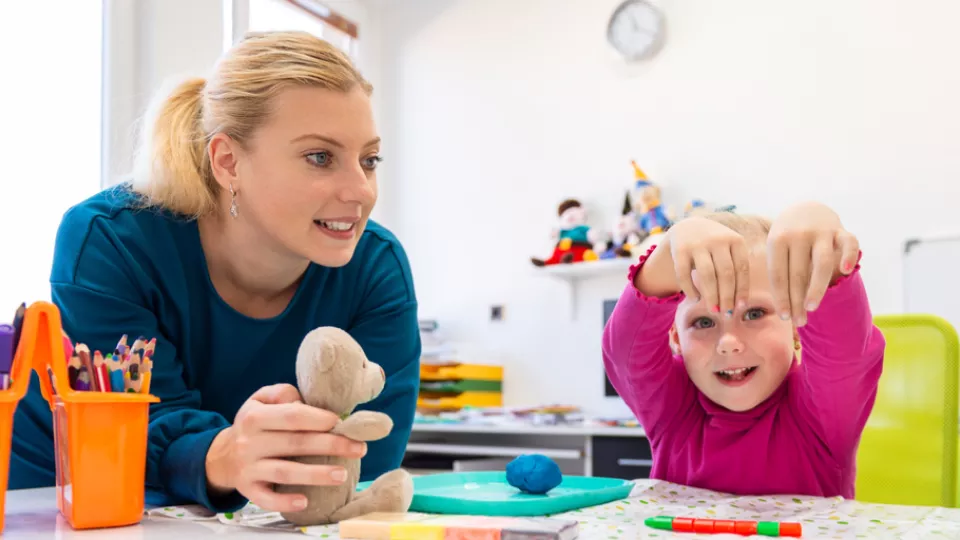
Promoting and Developing Fine Motor Skills in Children with Autism
Children with autism spectrum disorder (ASD) may face daily challenges in the areas of social interaction and engaging with others, communication, sensory processing, cognitive difficulties and motor planning and coordination skills.
Having your child work with an occupation therapist can help your child improve these areas. Occupational therapists are trained to determine if a delay in fine motor skills is due to motor planning, posture and low tone, visual motor integration skills or sensory processing difficulties. In addition to providing assessment, occupational therapists are also trained to provide intervention to address the individual’s fine motor skills through activities which target these skill areas. All of these areas influence handwriting, as well as other occupations that we use fine motor skills for on a daily basis including dressing, self-care and grooming tasks and feeding skills.
Occupational therapists can help your child achieve goals during therapy sessions, but there are specific activities and strategies that can be done at home to help develop and strengthen your child’s fine motor ability.
- Look for hidden objects in putty, Playdoh or clay
- Make slime or another resistive texture to allow the child to pull apart and squeeze
- Have the child look for hidden objects in different tactile media (i.e. reaching into the sand and pulling out a marble)
- Put snacks in snack bags or other plastic containers that would allow the child opportunities to manipulate snaps.
- Use a squeeze toy.
- Use magnet tiles or construction blocks to pull apart and piece together.
- Put Velcro strips on the back pieces of puzzles for there to be some resistance when pulling.
- Use clothespins or tongs to pick up small manipulatives to sort.
- Use a squeeze bottle to water plants.
- Put coins into a piggy bank.
- Lace blocks/beads of various sizes onto string or pipe cleaners
- “Write” in clay, sand, dirt or other tactile media
- Use broken crayons to facilitate a proper pencil grasp
- Peel stickers
- Use a hole punch
- Cut out simple shapes or along a line
- Build letters out of wiki stix or pipe cleaners
Children with autism spectrum disorder typically require additional time to acclimate to new situations and accept changes in their typical routine. Fine motor skills may be challenging to address because children with ASD can become overwhelmed by the different aspects of an activity so continued exposure, persistence and success with a task can make children with ASD all the more willing to participate in different fine motor activities.


